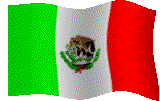|
In his book "The Milpa and the Origin of the Maya Calendar", Paulino Romero Conde puts forth the theory of the Tzolkin being the initial Maya calendar and how it is linked to the milpa, a system used by the Maya to cultivate corn. The main reason for this is the importance corn cultivation had for this culture, since it is the only cereal they domesticated. He states: "The current Maya system for corn cultivation is basically the same that has been used for 3000 years. Its main activities are to fell the big trees, burn them along with the weeds and their seeds, plant the corn, then weed the plants as they grow, when the ear is mature the stalks are bent and the corn is left to dry in the field, then it is harvested and after a few years the corn field is moved to a new location. This practice of slash and burn agriculture has been called la milpa, which is an Aztec word for "corn field" that was used by the Spaniards to designate corn fields, even in other parts of Mexico and Central America. The Mayan word used in Yucatan is col, and similar names are used in other Mayan dialects. This activity is still very important to today's Maya population who continue to perform it in the same manner as their forefathers. As the Maya population grew, the need for more food became indispensable and the attempts to obtain a more abundant crop started, this was done mainly by selecting different corn varieties and by carefully coordinating the dates of cultivation with the rain cycle. The time count used for corn cultivation must have been based on the initial Maya numeration which consisted of the number of fingers on both hands and feet or the number 20, a kal. The observation that 13 kal (260 days) were needed from the choosing of the location for the milpa until the burning of the felled forest patch and equal number of kal elapsed from the planting, through the growth and harvest until the corn was stored, gave origin to the first Maya calendar. The Tzolkin, Mayan name derived from the word tzol which means "to put in order", and kin that means "day", was a ceremony in which the priests assigned the order of the days to realize the milpa's activities and the ceremonies related to its different phases. One Tzolkin cycle was related to the preparation of the land and a second Tzolkin cycle was directly related to the growing and harvesting of the corn. From a religious point of view this 13 kal time period gave place first to the deification of number 13 and second, to the creation of the thirteen day time period called Oxlahunkin which then became the base of the Tzolkin calendar and thus a 260 day milpa cycle ended up being made of 20 thirteen day periods. Some time afterwards the Maya started to notice the time it took the Sun to complete it's yearly cycle and the length of it was established in 28 thirteen-day periods which added up to 364 days, a length that did not adjust exactly to the cycle. We suppose that the astronomers and the mathematicians had different opinions and while the former held up that the exact measure of the cycle should be used the latter insisted in having a time period as close as possible to the real one that would make calculations simple, that is, a multiple of 20. Finally they agreed to create a 360 day year for calendric calculations they called Tun, it was divided in 18 months of 20 days, called the Uinal, each with a distinct name and numbers from 0 to 19 were also given to their component days. Then a period of five days called uayeb was added to the Tun year and this gave birth to the Haab calendar. In this calendar the uayeb were placed just before the beginning of the astronomical year. The Tzolkin and the Haab were then coordinated and this gave place to the calendar round." |
Click on these links to view Maya World SC publications:
Copyright © 1996-2002 Centro de Estudios del Mundo Maya. All Rights Reserved. |
||||||||||||||||||
